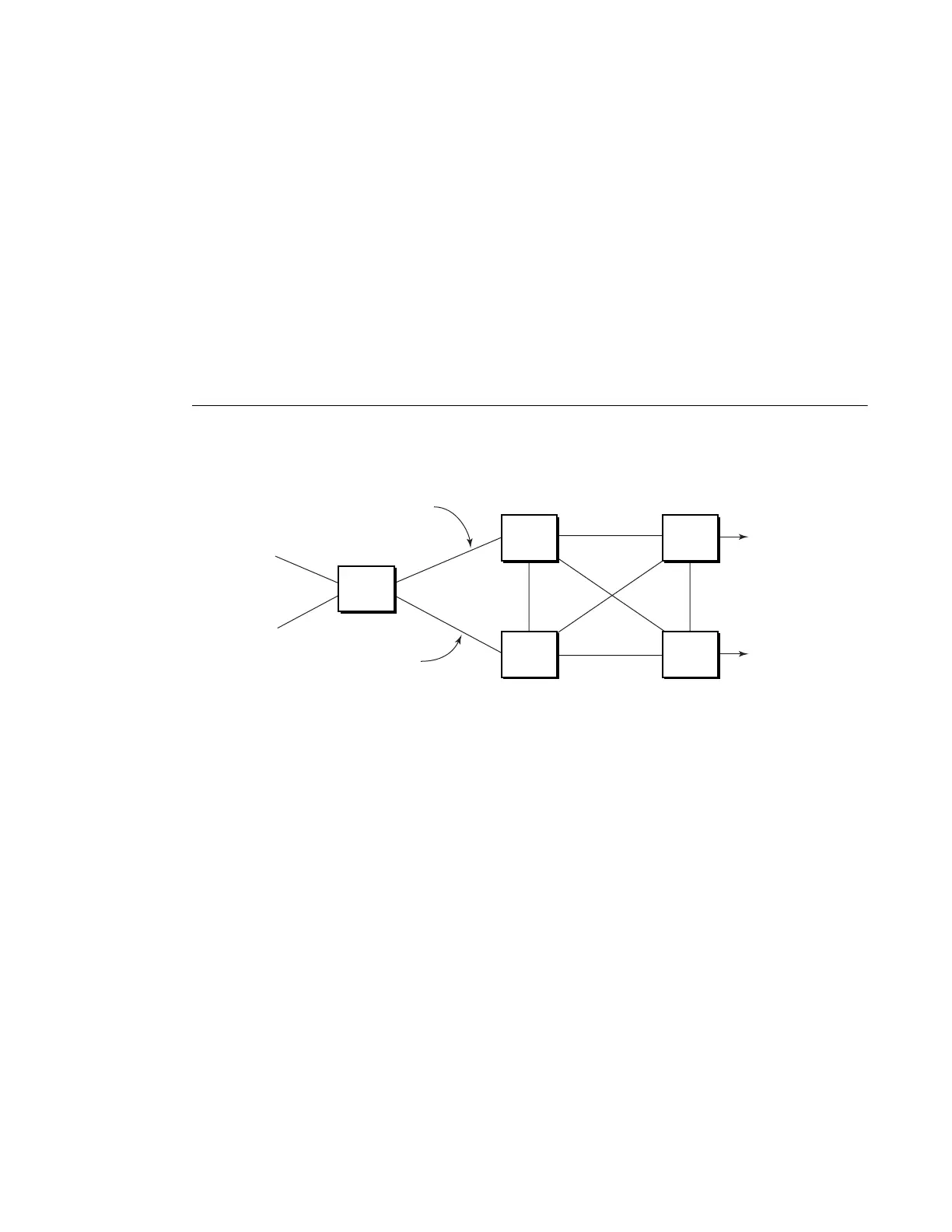VPLS Features
Page 276 7210 SAS M Services Guide
VPLS Access Redundancy
A second application of hierarchical VPLS is using MTUs that are MPLS-enabled which must
have spoke SDPs to the closest PE node. To protect against failure of the PE node, an MTU can be
dual-homed.
Listed below are several mechanisms that can be used to resolve a loop in an access network
where 7210s are used
• STP-based access, with or without mVPLS.
• Ethernet APS using G.8032.
STP-Based Redundant Access to VPLS
Figure 44: Dual Homed MTU-s in Two-Tier Hierarchy H-VPLS
In configuration shown in Figure 44, STP is activated on the MTU and two PEs in order to resolve
a potential loop.
In order to remove such a loop from the topology, Spanning Tree Protocol (STP) can be run over
the SDPs (links) which form the loop such that one of the SDPs is blocked. Running STP in every
VPLS in this topology is not efficient as the node includes functionality which can associate a
number of VPLSes to a single STP instance running over the redundant SDPs. Node redundancy is
thus achieved by running STP in one VPLS. Thus, this applies the conclusions of this STP to the
other VPLS services.
The VPLS instance running STP is referred to as the “management VPLS” or mVPLS. In the case
of a failure of the active node, STP on the management VPLS in the standby node will change the
link states from disabled to active. The standby node will then broadcast a MAC flush LDP control
message in each of the protected VPLS instances, so that the address of the newly active node can
OSSG206
s
S
S
sS
PE-1
CE-1
Customer
Site 1
Primary Spoke
Pseudowire
Backup Spoke
Pseudowire
Customer
Site 2
CE-1
(MTUs)
PE-3
PE-2
H-VPLS Full
Mesh
Core
PE-4

